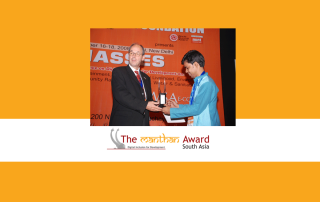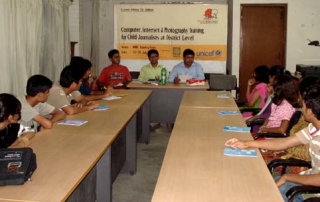Sharing Bangladesh success, opportunity and vision on media and development issues. We will feature best practitioner, media celebrity, success stories and lifetime media works.
The dirty truth about “unlimited” hosting space and bandwidth
There’s a dirty little secret out there amongst hosting companies, and that is what they call “Unlimited” hosting, usually something like “Unlimited Diskspace/Storage” and “Unlimited Transfer/Bandwidth.” Obviously, if this were completely true, companies like Ebay, Amazon, Wikipedia, and Craigslist would simply sign up for them too. The reality is, you will have to upgrade if you have a moderately busy site, but it’s too complicated to explain to the average customer.
With web hosting companies offering unlimited bandwidth, storage, and support, how can the leading brands on the web be offering their hosting services for only a few dollars a month? And if they really can offer these services for so little, how come purchasing VPS hosting and dedicated hosting can cost so much more – to the tune of hundreds of dollars per month? With such large price variations, the average web host consumer needs a little help in figuring out the best way to determine their needs. Well, fear not – this article is going to help you decide whether “unlimited” hosting services or a dedicated/VPS server is best for your needs.
FACT #1: Hosting Companies are Overselling & You Probably Won’t Use That Much in the Beginning
The reason most modern shared hosts can offer “unlimited” bandwidth and storage is that Hosting Companies are mostly banking on the fact that you really won’t use that much, especially considering the ever decreasing costs of storage and transfer. They are overselling their hosting services. There are a few companies that do not oversell, and in return, they tend to be much more reliable in our experience.
Most small, new websites will use a tiny fraction of the diskspace offered. In most cases, less than 1/1000th of the limits they are offering you. This is even true for Hosting Companies that offer a couple gigabytes of storage space for your site. We have rarely seen a site that has exceeded limits here. Traffic on most small, new sites alse tends to be low relatively speaking. Of course, there are lots of exceptions to this rule. Hosting Companies are playing a game of averages here, knowing that on average, most people will use very little resources.
Like your home computer, hard drives are used at Hosting Companies to store your website. Hard drives are very large now, and probably much like your home computer, you really won’t use that much space for your website (unless you are a power user). Websites haven’t gotten that much bigger over the years, but hard drives have, driving down the cost for Hosting Companies. The same is true for bandwidth (a.k.a. transfer). It has gotten cheaper, and most websites really don’t need that much. It’s cheap for the hosting company.
Actually, as of late, many people have started using their hosting company to backup their home computers, which has put a strain on these companies that oversell, forcing them to spell out various rules against using them as a backup service.
So, what is the bottleneck you ask, and what are they actually selling?
FACT #2: You WILL Run Out of CPU and Memory Long Before You Run Out of Diskspace or Transfer
This is a bit technical, but don’t worry if you don’t understand some of the details. Realize that your website is hosted on a server, which is just very much like your home computer (but usually in a different shape, and more specialized for hosting purposes). There are usually dozens, or hundreds of websites hosting on each server.
A big host like Bluehost defines their server limits as a number of CPU seconds used which are equated to real-time seconds; if a website has 200 processes in a minute and each uses .4 CPU seconds, your website would be suspended. If those processes took two minutes, then the website would remain running. Most web hosts try to avoid explaining the technical side of this, and instead try to sell to customers based on how many domains can be hosted with one account, and how much space a website is allocated.
In short, if your site starts to get a lot of traffic at once and slow down your website, it’s going to hog up that servers processor (CPU); which in turn will make everyone elses website on that server go slow too.
The same is true for memory (RAM) usage. Some hosts even give you a short history of your site’s CPU and memory usage.
FACT #3: Most Hosts Have More Than Enough, so Shop on Customer Service Quality, Uptime, and Other Features
With the thousands of sites we have worked with over the years, almost never has a site exceeded the bandwidth, or storage limits of their hosting account. In fact, probably the biggest cost in hosting is becoming the cost of support. One server can support hundreds of websites, but it might take thousands of man hours per year to support those customers.
With this in mind, the factors that really make a difference to your website will be how the host can support your customer service needs, the quality of that customer service, and the actual uptime the host experiences. How quickly does your host respond to your needs? How often are its servers (and therefore your websites) off-line? Are they pleasant about solving your problems effectively?
As Christopher Heng puts it in his fine printe on Web Hosting article, “you will never be able to use up all of the bandwidth you are provided. Long before you even reach the amount you are supposedly allowed to use, your site will have hit its resource limits.”
Dynamic, database-driven sites, such as ones that have PHP, ASP, Perl, Python, and other coding languages, will definitely take up more server resources (e.g. CPU and memory) than a static site–one written in HTML. This is even more so when your site has poorly coded scripts, and fails to use caching, which can be accomplished numerous ways.
The unlimited bandwidth controversy
For some time now a lot of hosting companies are supposedly providing “unlimited bandwidth” for their web hosting packages.
It’s absolutely true, you can have unlimited bandwidth. However, you will need an unlimited amount of money by your side! Jokes apart, if you ever come across such a host it would be best to turn around and run back the way you came from.
Just think, if you can get unlimited bandwidth for $25-30 a month then why aren’t big companies like Sun, Microsoft etc. not hosted there? In fact, why isn’t everyone hosted there? For that matter, if unlimited is a standard feature then why don’t all the hosts offer it? Is it because it is expensive and requires better hardware? No, it’s because some hosts are honest and don’t give in to such gimmicks.
Statistically speaking, a T1 Internet connection (huge broadband) equals approximately 500GB per month and costs around $1200 per month. So how can it be possible to get the same or unlimited for $30 a month?
There are a lot of ways you can be duped by these ‘ unlimited’ hosts; here are just a few of them: The secret of ‘unlimited’ is actually buried in the Terms of Service by the host. Do not be surprised to find that unlimited = 15 GB.
The host may restrict the sort of files that you can host on their server. Generally image galleries and audio/video files attract a lot more downloads thereby resulting in higher bandwidth consumption. So if there are no files of this type, your site won’t really require a lot of bandwidth.
Some newly opened hosts use it as a scam. They take your money and after a few months when their server starts to become slow or reaches its limit, they run… with your money!
Some hosts outline in their Terms of Service that you can have unlimited bandwidth as long as you qualify for it. i.e. Your site must use less then, let’s say 2 GB of bandwidth in order to qualify for the unlimited bandwidth feature. As soon as your site goes over that limit they either start charging you for it or cut off your downloads altogether.
In life it’s a universal truth that you always get what you pay for, and it’s no different for web hosting.
If a host is using a cheap advertising gimmick like ‘unlimited’ bandwidth they maybe lying about a few other things too. Their ‘dedicated’ support team could be a single person (the hoster itself in most cases) sitting in front of a computer and taking your calls.
Do you really want unlimited bandwidth hosting from hosts that have very limited resources at their disposal? Or, do you want to go for a host that has spent thousands of dollars on setting up a good network infrastructure, servers, and a highly qualified and dedicated support team? The choice ultimately is yours and yours alone.
Bandwidth explained:
Bandwidth is the amount of data transfer that you are allowed to have for a hosting package i.e. Let’s say you have a web page that is 48KB in size, now each time a user opens your site and goes to that page S/he downloads 48 KB of information on to their computer. If a 100 users view that page one time each then there has been a total of 4800 KB of data transferred from the server on which your files are stored for the computer of users.
Size of web Page: 48 KB
Number of users who viewed the web page: 100
Total amount of data transferred: 48KB * 100 = 4800 KB
Bandwidth is the term that is used to denote the amount of data that has been transferred from your web space.
The amount of bandwidth that you require while choosing a host depends on two factors:
> The size of your site.
> The popularity of your site.
If your site is not very huge and you do not have any audio/video downloads and it’s not very popular i.e. not a lot of people visit your site then you do not really require a lot of bandwidth, on a average a web site uses up only 500 MB of bandwidth per month. Or if your site is small but extremely popular then you might have to go for a web hosting package that offers high bandwidth.
On the other hand if your web site is huge, providing audio/video downloads, as well as being very popular then you would certainly require a huge amount of bandwidth. Let’s say you have a video file that is 150 MB in size and in a single day a 100 visitors download the file. This means that 15 GB of bandwidth will have been used. If you multiply that by 30 days for the month it comes to 450 GB.
The article written by Ashish Jain






 Machizo’s project UnnayanTV has been listed in the final list of Stockholm Challenge 2008 in the culture section for highlighting the culture and marginalized life.
Machizo’s project UnnayanTV has been listed in the final list of Stockholm Challenge 2008 in the culture section for highlighting the culture and marginalized life.